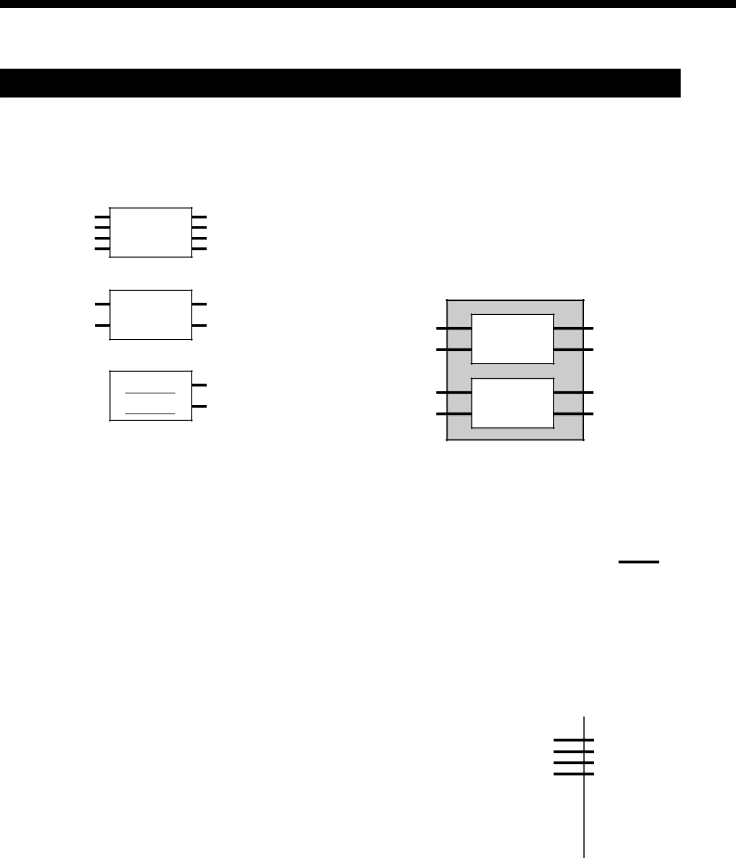
Getting Started
Understanding Effect Algorithms and Program Structures
Effect algorithms
This unit contains three types of effect algorithms: 4ch, 2ch, and
4ch
n n n n
Program structures
Each program can contain up two effects (FxA and FxB) depending on the type of effect selected.
If a 2ch or
2ch
n n
![]()
![]() n
n ![]()
![]()
![]() n
n
Parallel (/) program
1
2
3
4
FxA
(10~45)
FxB
(10~45)
n1
n2
n3
n4
The 4ch effects (algorithms # 01~09) are designed to handle four channels simultaneously. These are also the highest quality effects. Consequently, programs containing these effects can not contain any other effects.
2ch effects (algorithms # 10~36) and
The 2ch effects are “traditional” stereo effects.
FxA and FxB are completely independent.
Serial (m) program
1 + 3 |
|
|
|
|
|
|
|
| 1, 3 |
|
|
|
|
|
|
|
| ||
|
| FxA |
| FxB |
| n | |||
|
|
|
|
|
| ||||
2 + 4 |
|
| (10~45) |
| (10~45) |
| n | 2, 4 | |
|
|
|
| ||||||
|
|
|
|
|
|
|
|
|
|
The sound from FxA is fed into FxB for further processing before being output.
If a 4ch effect is selected, the program contains only one effect (the other effect is automatically disabled).
Example of program containing a 4ch effect
|
|
|
|
|
|
|
1 |
|
|
|
| n | 1 |
|
|
|
| |||
|
|
|
| |||
2 |
|
| FxA |
| n | 2 |
|
|
| ||||
3 |
|
|
| n | 3 | |
|
|
| ||||
4 |
|
| (01~09) |
| n | 4 |
|
|
| ||||
|
|
|
|
|
|
|
|
|
| FxB |
|
|
|
|
|
| (09~40) |
|
|
|
|
|
|
|
|
|
|
|
|
|
|
|
|
|
FxA only
8GB